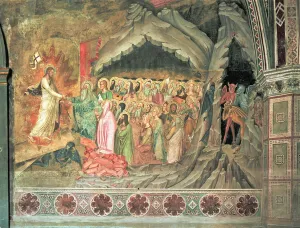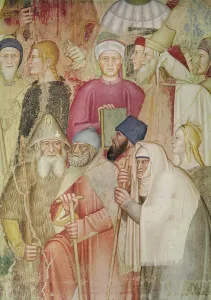Cappellone Degli Spagnuoli Collection
The "Cappellone degli Spagnuoli" is a magnificent fresco located in the Spanish Chapel of Santa Maria Novella in Florence
All Professionally Made to Order for Quick Shipping
The "Cappellone degli Spagnuoli" is a magnificent fresco located in the Spanish Chapel of Santa Maria Novella in Florence. This masterpiece, created between 1365 and 1369, depicts various scenes that showcase the power and influence of the Catholic Church during that time. One notable section of the fresco portrays The Pope and the Emperor, symbolizing the close relationship between religious and secular authorities. It highlights their collaboration for mutual benefit and control over society. Another captivating scene is The Descent into Limbo, which illustrates Christ's journey to free souls from purgatory after his crucifixion. This powerful image serves as a reminder of redemption and salvation through faith. In The Church Militant and Triumphant, we see an intricate depiction of both earthly rulers alongside heavenly figures like Santa Maria. This juxtaposition emphasizes how religion played a significant role in shaping political structures during this period. St. Thomas Aquinas personifies The Triumph of Catholic Doctrine, representing intellectualism within the church. His inclusion showcases the importance placed on theological teachings during this era. Rhetoric also finds its place in this artwork with depictions of Cicero, Grammar, and Aelius Donatus. These figures represent education as an essential tool for spreading religious ideas effectively. SS. Thomas and Peter are depicted confuting heretics in another section of this grand fresco. Their presence signifies the church's commitment to defending its beliefs against any opposition or dissenting views. The Road to Calvary offers a poignant portrayal of Christ's suffering before his crucifixion—a reminder to believers about sacrifice and devotion to their faith.












